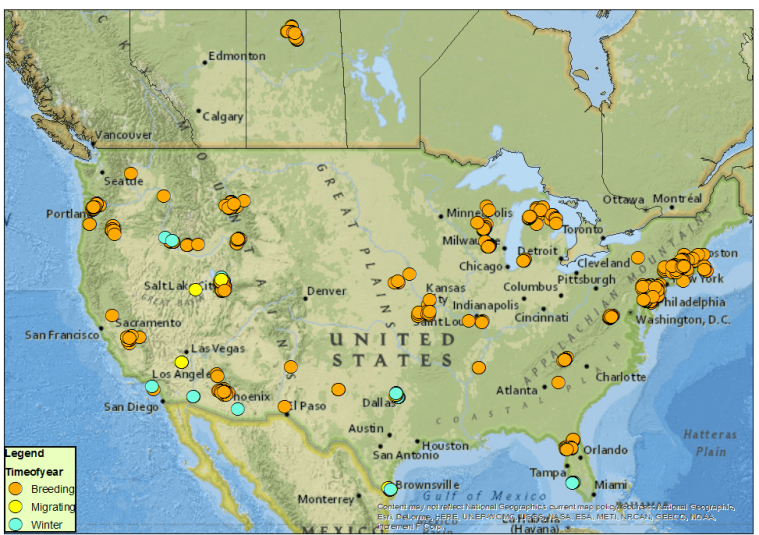The 2017 American Kestrel breeding season is well behind us, and the numbers are in! This breeding season, we received feather samples from 610 American Kestrels from across the breeding range!
Collaborators from 25 states sent us feathers from kestrels in their nest boxes, trapping sites, and rehabilitation facilities.
With the samples sent off to the genetics lab at University of California, Los Angeles for analyses, we are making great strides towards understanding the genetic structure of breeding kestrel populations.

This map shows locations where we have received feathers from American Kestrels in the breeding season (orange), migration season (yellow) and winter season (blue) from 2017 and prior years. (Not pictured: Alaska). We welcome samples from all locations, but if you work with kestrels in an areas without dots, WE NEED YOUR HELP! Please SIGN UP to contribute feathers, or see our GET INVOLVED page to find out more.
Full annual cycle research does not slow down with the cooling temperatures, and with winter upon us, the next phase of the Full Cycle Phenology project is shaping up. By sampling kestrels during migration and overwintering, we hope to be able to map individuals back to their breeding population of origin and to assess migratory connectivity and WE NEED YOUR HELP!
If you work with wintering kestrels please consider contributing feather samples. If you aren’t on our list yet, please SIGN UP to get your sampling kit mailed to you. If you are already signed up, but need more sampling envelopes, please Contact Us .




